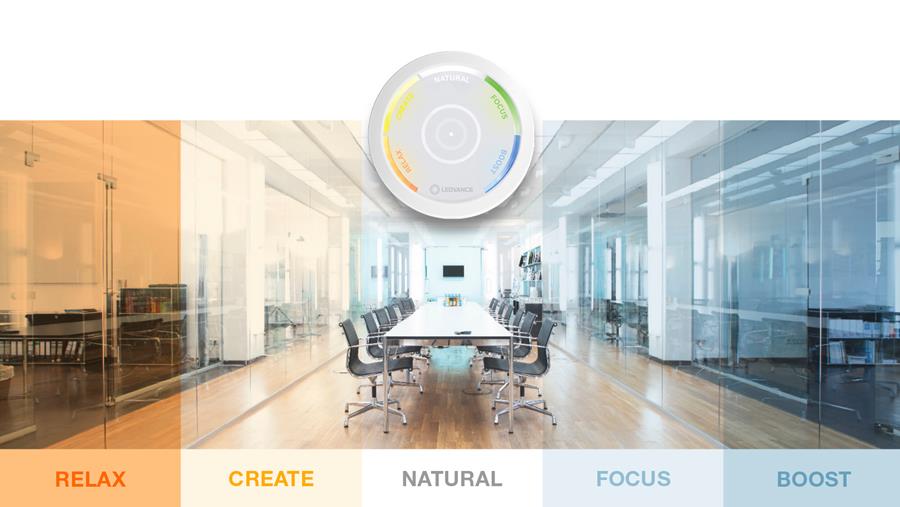Why the Human Centric Lightings Market is Gaining Global Momentum
Why the Human Centric Lightings Market is Gaining Global Momentum
Blog Article
In recent years, the human centric lightings market has experienced substantial growth, driven by the growing understanding of how lighting affects human health, mood, and productivity. Unlike traditional lighting systems that focus solely on illumination, human centric lighting (HCL) solutions are designed to support human biological rhythms and improve overall wellbeing by mimicking the natural patterns of daylight.
Human centric lighting involves dynamically adjusting the intensity and color temperature of artificial lighting throughout the day to align with the human circadian rhythm. By doing so, it helps improve sleep quality, boost concentration, reduce stress, and enhance overall performance in both residential and commercial settings.

Market Overview
The human centric lightings market is evolving rapidly as organizations and consumers become more aware of the physiological and psychological benefits of optimized lighting. Technological advancements in LED lighting, Internet of Things (IoT), and smart lighting controls have further accelerated the adoption of human centric lighting across sectors such as healthcare, education, retail, hospitality, and corporate offices.
With urbanization, longer working hours, and increased time spent indoors, there is a growing need for lighting solutions that can replicate the positive effects of natural daylight. The market is witnessing a surge in demand for smart, tunable lighting systems that can automatically adapt based on the time of day, ambient conditions, or user preferences.
Key Drivers of Market Growth
1. Health and Wellbeing Awareness
There is a rising awareness of how light impacts circadian rhythms, hormonal balance, and emotional health. This awareness is prompting increased investment in lighting systems that prioritize user wellbeing.
2. Smart Building Integration
The integration of human centric lighting with building management systems and smart home technologies is making it easier for users to customize and automate their lighting environments.
3. Regulatory Push for Energy Efficiency
Government regulations promoting energy-efficient and sustainable lighting solutions are encouraging the shift from conventional lighting to human centric alternatives, particularly those that use LED technology.
4. Workplace Productivity Initiatives
Businesses are embracing HCL to create healthier, more productive workspaces. Proper lighting can improve employee alertness, mood, and performance, reducing absenteeism and enhancing job satisfaction.
5. Technological Innovation
The development of tunable white LEDs, advanced sensors, and AI-powered lighting controls is expanding the capabilities of human centric lighting systems, making them more adaptive and user-friendly.
Applications of Human Centric Lighting
Offices and Commercial Spaces: Enhances focus, reduces fatigue, and improves collaboration by aligning lighting with daily work cycles.
Hospitals and Healthcare Facilities: Supports patient recovery and staff alertness through circadian-based lighting schedules.
Schools and Educational Institutions: Helps improve student attention and learning outcomes by using dynamic lighting patterns.
Retail and Hospitality: Creates welcoming and adaptive environments that enhance customer experiences and encourage longer visits.
Residential Settings: Offers customized lighting solutions for better sleep, relaxation, and home productivity.
Market Segmentation
The human centric lightings market can be segmented by:
Component: Hardware (LEDs, fixtures, sensors), Software, and Services
Installation Type: New installations and retrofit projects
Application: Residential, commercial, industrial, and institutional
Region: North America, Europe, Asia-Pacific, Latin America, Middle East & Africa
Europe currently leads the market, driven by early adoption, government policies, and strong demand in healthcare and education. North America follows closely, with rapid smart building integration and corporate adoption. Asia-Pacific is expected to witness the fastest growth due to urban development and infrastructure modernization.
Challenges in the Market
Despite its promising outlook, the human centric lightings market faces several challenges:
High initial investment and longer return-on-investment periods
Lack of awareness and understanding among end users, particularly in developing regions
Complex integration with existing building infrastructure
Limited standardization and guidelines for system performance and safety
However, increased education efforts, government incentives, and declining costs of smart lighting technology are expected to overcome these barriers in the coming years.
Competitive Landscape
Key players in the human centric lightings market include:
Signify (formerly Philips Lighting)
OSRAM Licht AG
Hubbell Inc.
Acuity Brands
Zumtobel Group AG
Fagerhult Group
Glamox AS
Wipro Lighting
Healthe Inc.
Lutron Electronics
These companies are focusing on research and development, strategic partnerships, and expanding product portfolios to strengthen their market position.
Future Outlook
The future of the human centric lightings market looks promising, with significant growth expected as awareness and adoption increase. The convergence of lighting with health tech, AI, and data analytics will enable even more personalized and intelligent lighting environments.
Emerging trends include:
Integration with wearable health devices
Voice and gesture-controlled lighting
Cloud-based lighting management systems
AI-driven circadian tuning for individual users
Sustainability and eco-friendly materials in lighting solutions
Conclusion
The human centric lightings market is reshaping how we perceive and interact with indoor environments. By placing human wellbeing at the core of lighting design, this market is not only improving physical health and mental performance but also paving the way for smarter, healthier spaces. As technology advances and user demand grows, human centric lighting will become a staple feature in homes, workplaces, and public spaces around the world.
Related Trending Reports
| FRAM Market |
| Machine Condition Monitoring Market |
| 3D Metrology Market |
| Digital Panel Meter Market |
| EMC Shielding and Test Equipment Market |